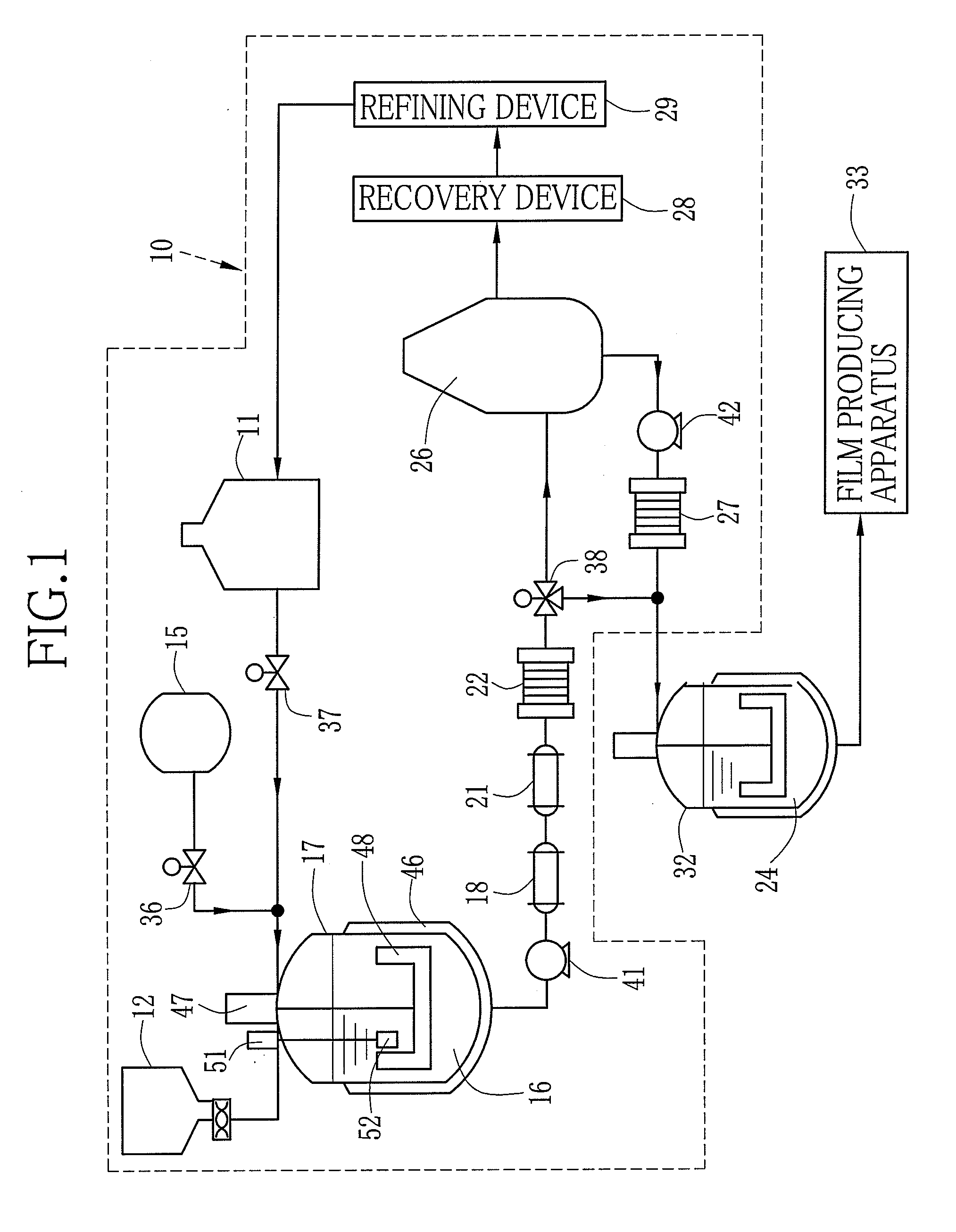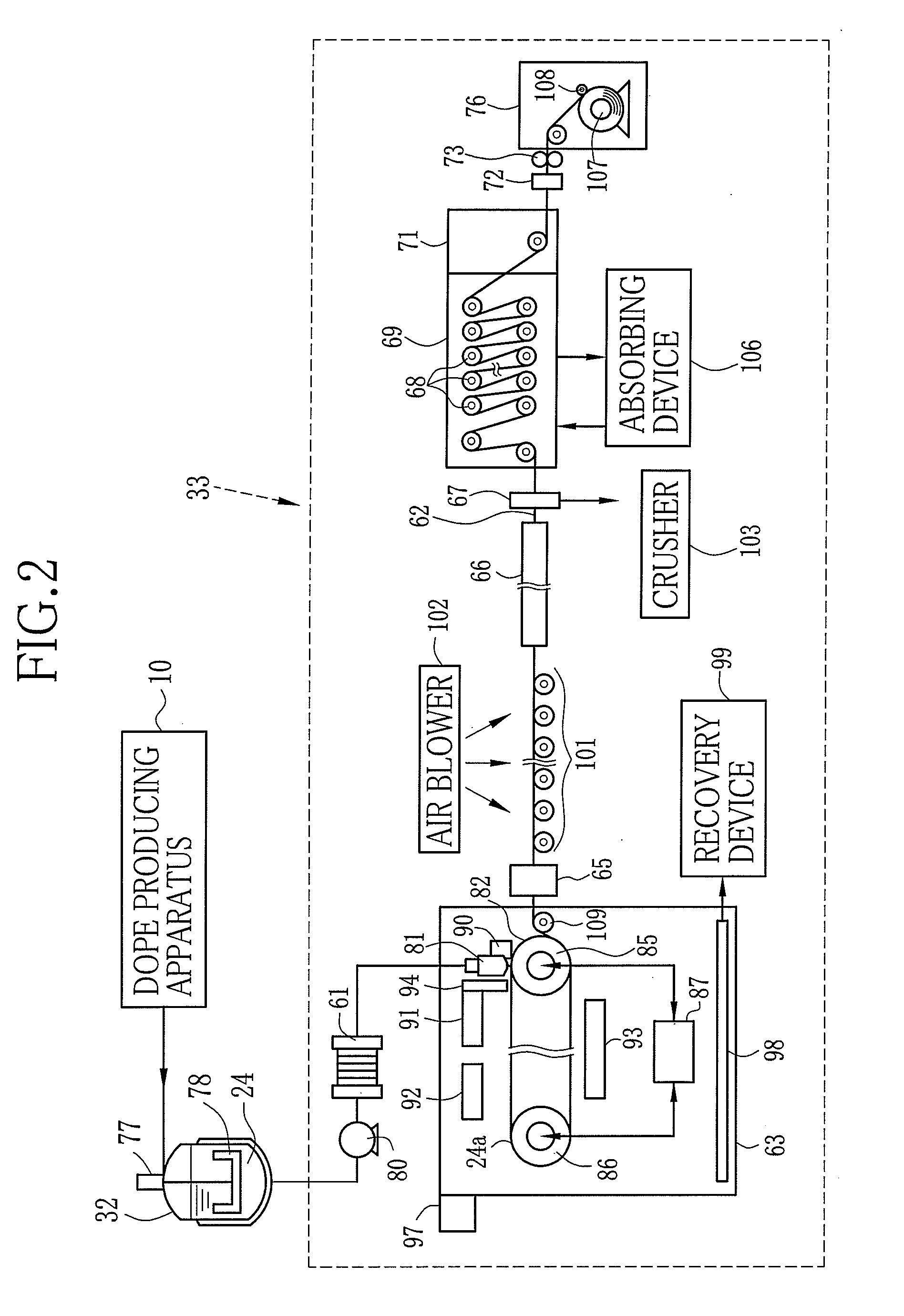Solid electrolyte multilayer membrane, method and apparatus of producing the same, membrane electrode assembly, and fuel cell
a solid electrolyte and multi-layer membrane technology, applied in the direction of electrochemical generators, cell components, membranes, etc., can solve the problems of large and complicated production apparatus, high cost of solid electrolyte membrane and catalyst members, and risk of continuous production, etc., to promote redox reaction, low cost, and uniform quality
- Summary
- Abstract
- Description
- Claims
- Application Information
AI Technical Summary
Benefits of technology
Problems solved by technology
Method used
Image
Examples
example 1
[0139]Hereinafter, examples of the present invention are explained. In the following description, Experiment 1 of Example 1 and Experiment 1 of Example 2 are explained in detail. With respect to Experiments 2 to 7 of Example 1 and Experiments 2 to 6 of Example 2, conditions different from each Experiment 1 of Examples 1 and 2 are only explained. Note that Experiments 2 to 6 of Example 1 and Experiments 2 to 5 of Example 2 are the examples of the embodiments of the present invention. Experiments 1 and 7 of Example 1, and Experiments 1 and 6 of Example 2 are the comparative experiments of the embodiments of the present invention.
experiment 1
[0140]{Production of First, Second and Third dopes 114, 115 and 116}
[0141]A material A was condensed by the flash device 26 and dried. Solid contents containing the dried material A was dissolved in the solvent according to the following composition, and the dopes having the solid contents of 30 wt. % were produced. The solvent was perfluorohexane. Note that catalyst fine particles did not dissolve in, but dispersed in the solvent. Additive rate of dichloromethane to the dope was varied in each Experiment 1 to 7 as shown in Table 1. The dichloromethane was the poor solvent of the dried material A. The dichloromethane was added to the first dope 114 and the third dope 116, but was not added to the second dope 115. Each Experiment 1 to 7 was performed with varying the additive rate of dichloromethane that was the poor solvent of the dried material A. The first to third dopes 114 to 116 in Experiments 1 to 7 all had 30 wt. % of the solid contents concentration. Note that the material A...
example 2
[0160]Solid contents containing a dried material B was dissolved in the solvent according to the following composition, and the first, second and third dopes 114, 115 and 116 having the solid contents of 30 wt. % were produced. The solvent was N-methylpyrrolidone. Note that catalyst fine particles did not dissolve in, but dispersed in the solvent. Note that the material B was sulfonated polyacrylonitrile styrene.
First dope 114:Dried material B10 pts. wtPt catalyst fine particles TEC10E50E20 pts. wt(manufactured by Tanaka Kikinzoku Kogyo K.K.)Second dope 115:Dried material BThird dope 116:Dried material B10 pts. wtPt—Ru catalyst fine particles TEC61E5420 pts. wt(manufactured by Tanaka Kikinzoku Kogyo K.K.)
{Production of Solid Electrolyte Multilayer Membrane 62}
[0161]Instead of the first to third dopes 114 to 116 of Example 1, the above-noted first to third dopes 114 to 116 were used. The temperatures of the dry air from the air blowers 91, 92 and 93 were regulated to be 100° C. to 12...
PUM
| Property | Measurement | Unit |
|---|---|---|
| thickness | aaaaa | aaaaa |
| thickness | aaaaa | aaaaa |
| boiling point | aaaaa | aaaaa |
Abstract
Description
Claims
Application Information
 Login to View More
Login to View More - R&D
- Intellectual Property
- Life Sciences
- Materials
- Tech Scout
- Unparalleled Data Quality
- Higher Quality Content
- 60% Fewer Hallucinations
Browse by: Latest US Patents, China's latest patents, Technical Efficacy Thesaurus, Application Domain, Technology Topic, Popular Technical Reports.
© 2025 PatSnap. All rights reserved.Legal|Privacy policy|Modern Slavery Act Transparency Statement|Sitemap|About US| Contact US: help@patsnap.com



